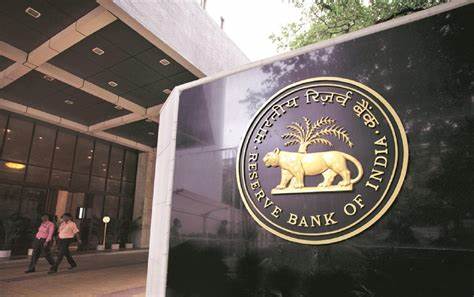RBI’s Record ₹2.11 Trillion Dividend to Assist Centre’s FY25 Fiscal Deficit, Reduce Bond Yields
The central bank’s announcement on Wednesday of a record ₹2.11-trillion dividend for FY24 is set to aid the government in achieving its FY25 fiscal deficit target. This move had an immediate effect on bond yields, bringing the 10-year benchmark yield below 7%. The FY24 dividend is a substantial increase, 141% higher than the ₹87,416 crore payout in FY23.

This record dividend will help the Centre reach its fiscal deficit goal of 5.1% of GDP for FY25. The dividend, paid in May 2024, will be accounted for in FY25 by the government.
Aditi Nayar, Chief Economist at Icra Ltd, noted that the higher-than-expected RBI surplus transfer would enhance the Centre’s resources in FY2025, potentially allowing for increased expenditures or greater fiscal consolidation than anticipated in the Interim Budget for FY2025.
The decision was made at the 608th meeting of the Central Board of Directors of the RBI, chaired by Governor Shaktikanta Das. The board reviewed the global and domestic economic outlook and associated risks.
Additionally, the RBI board decided to increase the contingency risk buffer (CRB) from 6% to 6.5%, citing the economy’s robustness and resilience. The CRB is a fund reserved by the central bank for unexpected contingencies, such as securities depreciation or systemic risks.
Kotak Mahindra Bank’s Chief Economist, Upasna Bhardwaj, attributed the large dividend to higher interest rates on domestic and foreign securities, significant forex sales, and reduced liquidity operation drag compared to the previous year. Bhardwaj added that the increased CRB will help ease the fiscal deficit by 0.4% in FY25.
The RBI’s increased dividend will offset lower-than-expected government revenue from divestments and other sources. It is also expected to reduce the government’s gross borrowing estimate of ₹14.13 trillion for FY25, lowering borrowing costs.
Following the announcement, the 10-year bond yield dropped to 6.99%, its lowest in nearly a year. Economists at Bank of Baroda anticipate the 10-year yield to remain below 7%, supported by frontloading by foreign portfolio investors (FPIs) due to the inclusion in the global bond index.
Icra’s Nayar pointed out that increased funds for capital expenditure would improve the quality of the fiscal deficit, though additional spending might be challenging to execute within the remaining months of the fiscal year post-final budget presentation.
Anand Mahindra, Chairperson of Mahindra & Mahindra and RBI board member, praised the central bank for the record payout and its prudent management of the institution, highlighting the increase in the CRB to 6.5%.
RBI’s dividend payouts come from its surplus after provisioning for contingencies or potential losses. The surplus largely derives from financial market operations, foreign exchange interventions, income from government securities, and returns on foreign currency assets. Other income sources include deposits with other central banks, the Bank for International Settlements (BIS), short-term bank lending, and management commissions from handling government borrowings.




